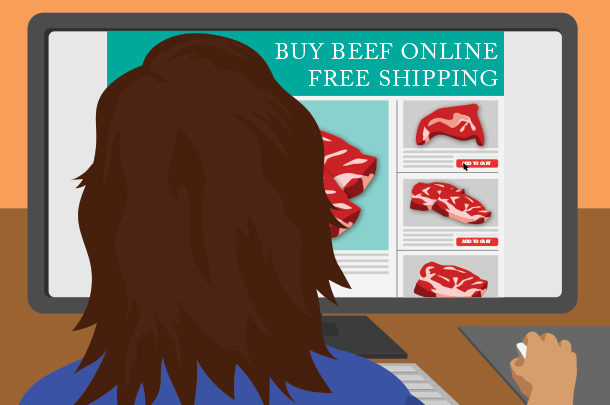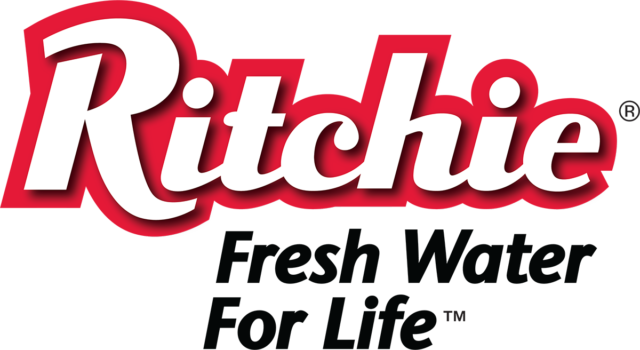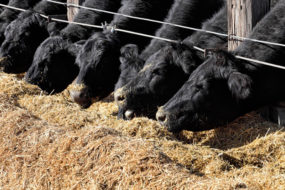The global pandemic encouraged many consumers to buy groceries online. As a result, grocery stores and the beef industry faced challenges and opportunities as they learned more about virtual shopping. Shawn Darcy, senior director of market research at the National Cattlemen’s Beef Association (NCBA), reports that as of November 2020, e-commerce increased 60%. In a Beef Checkoff online survey, 67% of consumers said they occasionally purchased groceries online, and more than 70% of those consumers disclosed they started buying via internet or increased digital purchases during the pandemic.
“Seventy-seven percent of consumers were satisfied with ordering beef online, and only 5 percent indicated they were dissatisfied,” Darcy concludes. “While there are challenges and barriers to purchasing beef, many have been happy with their experience.”
Challenges and opportunities
Bridget Wasser, the NCBA’s senior executive director of product quality and education, says one challenge an in-store meat department faces is maximizing shelf life by controlling temperature throughout the process. “Some shoppers may prefer to select their fresh grocery items, like beef,” Wasser shares. “However, there’s a tremendous opportunity to win these shoppers over with the convenience online shopping can bring to busy lives. To win them over, encourage them to try it a few times, and then nail the quality you deliver when they do. It’s critical to get their first order right. Training store staff to be consistent and reliable personal shoppers for customers is also critical.”
Some trial-and-error is necessary when trying internet shopping for the first time. The beef cut selection from the supermarket should mirror what customers see in the meat case. Customers can usually include special requests to their beef order.
Jayson Lusk, an economist in the department of agriculture economics at Purdue University, admits he was surprised that beef demand was strong enough to empty meat cases during the pandemic’s early stages. Although beef is more expensive than other protein options, consumers bought beef.
In a recent national survey conducted by Lusk, 66% of respondents said they did most of their grocery shopping in-person. “That means 33 percent had a mix of online shopping,” Lusk explains. “People are buying meat as much online as compared to other products. There’s still that 25 percent who said they bought meat within the last month online. Twenty-five percent is a huge chunk [of the market].”
For ranchers who produce beef to sell on their websites, Lusk says this is an opportunity to tell a story, connecting consumers with their brand or a particular advertised quality characteristic. That last mile to the consumer is essential; thinking through logistical issues is crucial. “It’s more than just beef; it’s the whole package delivered to the consumer,” Lusk concludes. “What does the buyer see when he opens the package? How was the buying experience? Those things will be as important to future sales as the meat itself.”
Phil Bass, a meat scientist at the University of Idaho, found studies that indicated only 8% of customers did not buy groceries on the web during the pandemic. And some experts expect the digital shopping phenomenon to grow almost 20% by 2025 – that’s one-fifth of supermarket patrons buying virtually.
“In my research, I found 21 percent of consumers started online grocery shopping in 2020 at a time that shook up the beef industry,” Bass explains. “Grocery stores had to focus on servicing customers in a way that differed from what was common and comfortable.”
Market research shows that more frequent internet grocery shoppers tended to skew middle-aged males with children, and they were more inclined to order beef. Anytime beef makes it into a shopping cart, either virtual or tangible, the cart’s value dramatically increases. Not only is beef a healthy item to consume, but it is good for the grocery business.
“The great thing about beef is the immense variety of options,” Bass observes. “It allows for different preparation techniques, such as smoking, slow cooking, grilling, skewers, burgers … there’s something for everyone in the beef carcass. That’s why it warrants an expanded display [in the store].”
Educating the consumer
Beef quality is critical, providing an opportunity for the grocery store to educate customers to be more particular when choosing meat products. Knowing quality specifications is important because the virtual shopper will not be choosing his steaks. Bass believes internet sellers should describe the quality levels of USDA Prime, Choice and Select cuts, and introduce branded programs, such as Certified Angus Beef or Swift Chef’s Exclusive. Supermarkets can teach consumers about the benefits of spending a little more for a much better eating experience when buyers try higher-quality grades. It is also a chance to instruct and inform people who routinely use screen time.
Most supermarket customers find picking meat intimidating because of the vast number of different cuts. With the added dimension of quality levels and branded programs, it can be overwhelming for folks to understand. It is crucial for customers to try different cuts and ways of preparing them.
“I believe shoppers in rural communities still want to have that tangible in-store experience,” Bass continues. “Those in metropolitan areas, who are more separated from agriculture, will probably embrace online shopping that much more if they have a positive eating experience when the product comes home. I can’t emphasize that enough. As long as people have a positive experience, they’re likely to return to it.”
Packaging also influences shoppers. Most meat in American beef cases is wrapped in an oxygen-permeable membrane, allowing oxygen to pass through. The product looks great. However, if customers don’t cook it in a day or so, the product changes color, and spoilage likely occurs within a week.
“If customers want to freeze it, the overwrapped package is not ideal,” Bass argues. “This is an opportunity for the grocery store to embrace vacuum packaging, which extends shelf life in a refrigerated environment. It maintains the product’s moisture and you don’t have leakage. In almost every situation, you can buy in bulk, put it in the freezer and pull cuts as needed.”
The meat’s color is not the bright cherry-red color consumers are accustomed to with vacuum packaging, but a dull purple. When the consumer opens the package, oxygen interacts with the meat, turning it red again. It has been difficult for customers to accept vacuum-packaged meat because of the appearance. Customers should know the meat is still high quality and easy to work with.
“Continue to educate customers, embrace some of these new technologies, but hold on to traditions,” Bass advises beef operators. “Beef is still huge. It’s going to keep the lights on and pay the bills. This is a chance to reach out to more consumers, especially the younger generation that is so accustomed to using online technology.”
Bass recommends online grocery stores show photos of both fresh and cooked beef cuts. Discuss the benefits of beef. Explain where cuts come from on the animal and which ones are Prime. If an operation has not focused on the grade attributes, this might be the time to refocus on beef quality. It is good for the customer, the grocery store and, best of all, cattle producers are paid more for higher-quality animals.







